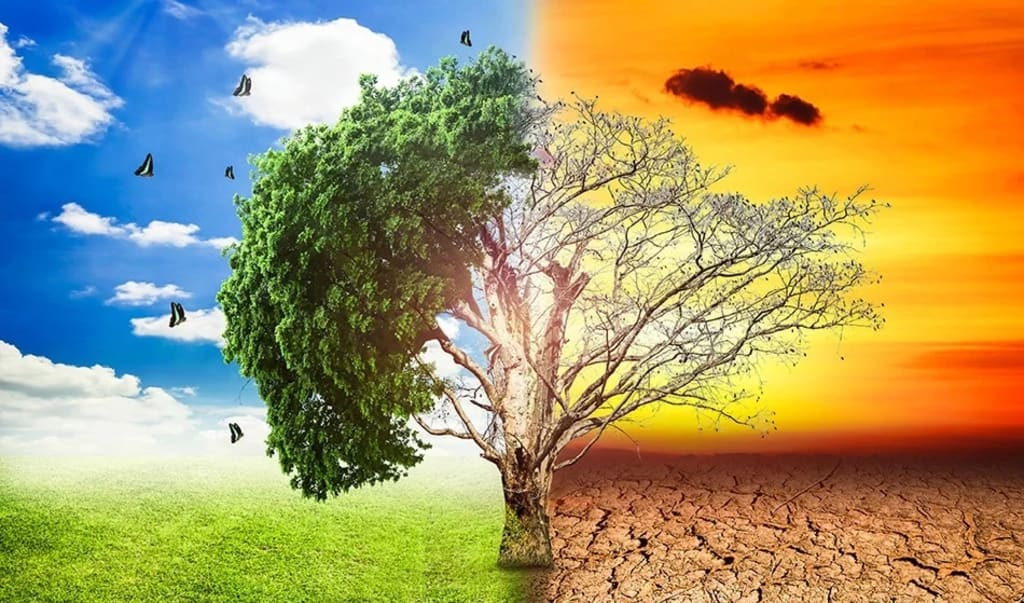
WHAT IS CLIMATE CHANGE?
Widespread improvements in the quality of life of many of the world’s populations have gone hand-in-hand with increased demands on natural resources. The planet is struggling to keep up, with increases in the average global temperature and the frequency of extreme weather events transforming ecosystems around the world and threatening entire species of plants and animals. Forests are drying up, there is less rainfall and more fires, and the glaciers of both the North and South Poles are shrinking. The consequences of climate change affect all of us, but in order to react and adapt to it, we must first understand it.
Once upon a time, there was a small village nestled in the heart of a lush, green forest. The villagers were content and lived in harmony with the natural world around them. They depended on the forest for their livelihoods, and took great care to ensure that they did not exploit its resources beyond what was sustainable.
However, as time went on, the world around them began to change. The air grew warmer, the rains became less predictable, and the seasons seemed to blur together. The villagers could not understand why this was happening, but they knew that something was terribly wrong.
They soon learned that the culprit was global warming. The planet was heating up at an unprecedented rate, and the effects were being felt all over the world. The glaciers were melting, the oceans were rising, and entire species of plants and animals were going extinct.
The villagers knew that they had to take action, and so they banded together to find a solution. They decided that the first step was to reduce their own carbon footprint. They began to plant trees, use renewable energy sources, and recycle as much as they could.
Despite their efforts, the effects of global warming continued to worsen. The forest that they depended on was dying, and the animals that they had once hunted were disappearing. The villagers were forced to migrate to new areas in search of food and water.
As they traveled, they encountered other communities who were facing similar struggles. Together, they formed alliances and worked to mitigate the effects of global warming. They shared knowledge and resources, and worked tirelessly to find new solutions.
Their efforts paid off. Over time, the global community began to take notice, and governments around the world began to take action. They passed laws to limit carbon emissions, invested in renewable energy sources, and worked to protect vulnerable species.
As the years went by, the planet slowly began to heal. The forests regrew, the animals returned, and the air grew cleaner. The villagers who had once struggled to survive were now thriving, and they knew that they had played a small but important part in saving the planet.
Climate is not the same as weather, but the two phenomena are closely related. While weather refers to short-term conditions that can change quickly, climate determines the long-term character of a given place, for instance, whether it is temperate or tropical. The relationship between weather and climate is crucial: the former is subordinate to the latter. Climate determines temperatures, weather diversity, the traits of winters, rainfall totals, as well as the nature of meteorological phenomena such as the severity of storms. It is due to this delicate relationship that we are facing both temperature rises and more frequent weather extremes and natural disasters as a result of climate change.
The lesson of their story is clear: global warming is a real and present danger, and it is up to all of us to take action to mitigate its effects. By working together, we can ensure a bright and sustainable future for generations to come.
Thank you for reading this page
One like and subscribe
About the Creator
Enjoyed the story? Support the Creator.
Subscribe for free to receive all their stories in your feed. You could also pledge your support or give them a one-off tip, letting them know you appreciate their work.






Comments
There are no comments for this story
Be the first to respond and start the conversation.